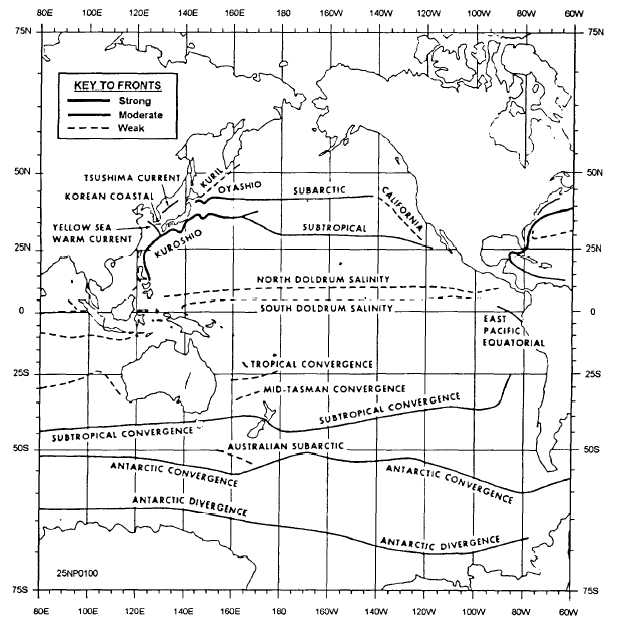upward flow, from 100 to 200 meters (300 to 600 feet)
deep, replaces surface waters blown seaward. Coastal
upwelling is common along the west coast of continents.
Upwelling also occurs in the equatorial open
oceans. This wind-induced upwelling is caused by the
change indirection of the Coriolis effect at the equator.
Westward flowing, wind-driven surface currents near
the equator flow northward on the north side and
southward on the south side of the equator.
TYPICAL LOCATIONS OF PACIFIC AND
ATLANTIC OCEAN FRONTS
Figures 9-15 and 9-16 show approximate locations
of Pacific and Atlantic Ocean fronts. The dashed lines
are weak fronts, which may not be significant to ASW
operations. The solid lines represent the moderate
fronts which, under certain conditions, may be
important operationaly. The heavy lines are the strong
fronts, which usually have a significant effect on ASW
tactics.
Although it is not possible to show typical locations
of large ocean eddies due to their constant motion, they
are generally found on either side of strong fronts such
as the Gulf Stream or the Kuroshio. Smaller eddies,
such as those formed by upwelling can be found in any
part of the ocean.
Figure 9-15.-Mean position of Pacific fronts.
9-16


